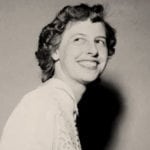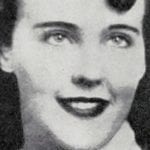 Weird Stuff
Weird Stuff  Weird Stuff
Weird Stuff  Mysteries
Mysteries 10 Tragic Disappearances and Deaths in Joshua Tree National Park
 History
History 10 Ways Childhood Really Sucked in the Old West
 Music
Music 10 Name Origins of Famous Bands from the 1990s
 Religion
Religion 10 Biggest Turnarounds by the Catholic Church
 Weird Stuff
Weird Stuff 10 Unbelievable Times Laws Had Unintended Consequences
 Humans
Humans Ten Historic Women Who Deserve Way More Credit Than They Got
 Movies and TV
Movies and TV 10 Films That Spawned Major Lawsuits
 History
History Ten Times Towns Were Wiped Off the Face of the Earth
 Creepy
Creepy 10 of the Most Disturbingly Haunted Public Houses in the UK
 Weird Stuff
Weird Stuff 10 Niche Subcultures That Are More Popular Than You Might Think
 Mysteries
Mysteries 10 Tragic Disappearances and Deaths in Joshua Tree National Park
 History
History 10 Ways Childhood Really Sucked in the Old West
Who's Behind Listverse?

Jamie Frater
Head Editor
Jamie founded Listverse due to an insatiable desire to share fascinating, obscure, and bizarre facts. He has been a guest speaker on numerous national radio and television stations and is a five time published author.
More About Us Music
Music 10 Name Origins of Famous Bands from the 1990s
 Religion
Religion 10 Biggest Turnarounds by the Catholic Church
 Weird Stuff
Weird Stuff 10 Unbelievable Times Laws Had Unintended Consequences
 Humans
Humans Ten Historic Women Who Deserve Way More Credit Than They Got
 Movies and TV
Movies and TV 10 Films That Spawned Major Lawsuits
 History
History Ten Times Towns Were Wiped Off the Face of the Earth
 Creepy
Creepy 10 of the Most Disturbingly Haunted Public Houses in the UK
10 Tragic Fatal Motorsports Crashes
Motor racing – more specifically auto racing – is one of the largest and most popular spectator sports in the world. Formula One remains the most popular and enduring forms of motorsport worldwide, while in America NASCAR reins supreme. From its roots as an Olympic exhibition in 1900, through the modern era of incredible speeds, auto racing has endured as a sport full of passionate drivers and even more passionate fans.
This passion makes it more tragic when a life is taken during a racing event, something which happens far too often. This list looks at 10 deaths which were among the most shocking, unexpected and tragic in auto racing history.

Scott Kalitta was a two time Top Fuel drag racing champion, and the first driver to win races in both the Top Fuel and Funny Car divisions. He was one of the most successful drivers in American drag racing history.
During an event at Oldbridge Township Raceway Park in Englishtown, New Jersey, Scott was in a qualifying race when, near the end of the run, the engine exploded into flames. The parachutes failed to open and the car careened through a sand trap before hitting a concrete wall at nearly 300 miles per hour.
In reaction to Scott Kalitta’s death, NHRA shortened all races to 1000 feet and extended the length and depth of the sand traps at the end of tracks. Scott had qualified for the race the next day, and his opponent rolled his car slowly down the track in a solemn tribute to his deceased competitor.
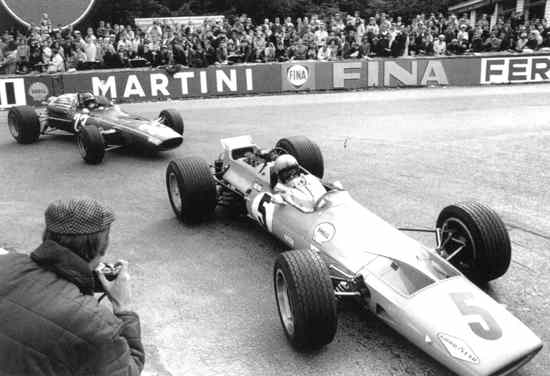
Though he never won a Formula One Championship, the brash New Zealander was an astonishing driver. In 100 career events, McLaren won four times and finished podium 27, and he finished second in the standings in 1960. He founded Bruce McLaren Motor Racing Ltd. in 1963, a team that still exists today as Team McLaren. In 1966, McLaren and co-pilot Chris Amon won the 24 Hours at Le Mans event, and in 1969 McLaren drivers swept the Can-Am series, winning 11 of 11 races.
McLaren died in 1970, when his Can-Am car crashed at Goodwood Circuit in England, during a testing run for a new body style on his car. McLaren Racing would go on to enjoy incredible successes in the Formula One circuit, but without the innovative prowess of its late founder, the team likely would not have evolved into the dominant powerhouse it is today.

Overshadowed by the death of Ayrton Senna the next day, Roland Ratzenberger died at Imola, in 1994. Ratzenberger defined the term “up-and-comer”; in 1994, he signed a five-race deal with upstart Simtek racing, and finished 11th at TI Circuit in Japan.
Ratzenberger was killed during a qualifying run at Imola. He had damaged his car on the previous lap and was attempting to secure the last grid spot, when the wind pressure caused by his high speed tore the wing completely off the car. The wing slid underneath the car, which failed to make the corner and slammed into the wall at 195 miles per hour.
Ratzenberger’s funeral was attended by Formula One President Max Mosley, who would later remark that “Roland had been forgotten. So I went to his funeral because everyone else went to Senna’s. I thought it was important that somebody go to his.”
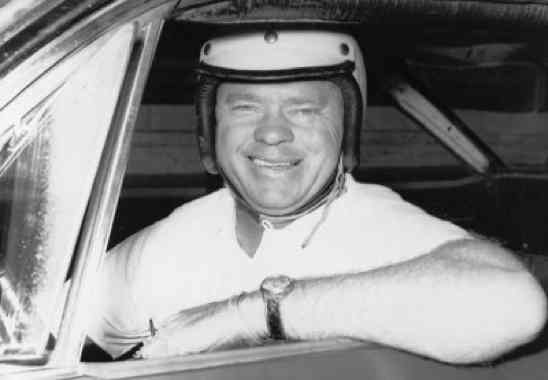
Joe Weatherly was known in his time as “The Clown Prince of Racing” for three reasons: 1. He once took a practice run wearing a Peter Pan suit. 2. He was known for playing pranks on fellow drivers. 3. He stayed out partying into the early hours with Curtis Turner, a fellow driver and close friend. Despite his reputation as a clown, Weatherly was a successful and accomplished driver, winning 25 races and consecutive championships during his twelve year NASCAR career.
Weatherly, the defending series champion, was killed in 1964, at Riverside International Raceway during the fifth race of the season. It was later determined that, upon impact with the wall, his head had come out of the window and been crushed against the wall, killing him instantly. His death lead to the development of window nets, which are now commonly used in stock car series across the world. He is the only defending champion in NASCAR history to die in a race.
As a final joke, Riverside Speedway was engraved into his headstone.
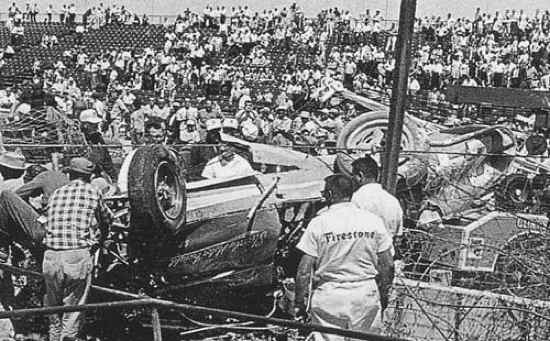
Coiner of the phrase “If you can’t win, be spectacular”, Eddie Sachs had won many races across various stages of American Motorsports, and raced in the Indianapolis 500 a number of times. Sachs was another driver vying for the title of “Clown Prince of Racing,” as he was known to race with a lemon tied to his neck (for reasons known only to himself).
Sachs was killed after a crash with Dave MacDonald on the second lap of the 1964 Indianapolis 500. MacDonald’s unstable car had crashed and burst into flames. Sachs, following another driver, attempted to avoid MacDonald’s sliding car, but slammed into it, causing an explosion. Sachs died after the accident despite having few burns.
The accident, which was seen worldwide, put an end to gasoline usage at Indianapolis, where they have used methanol since 1965.
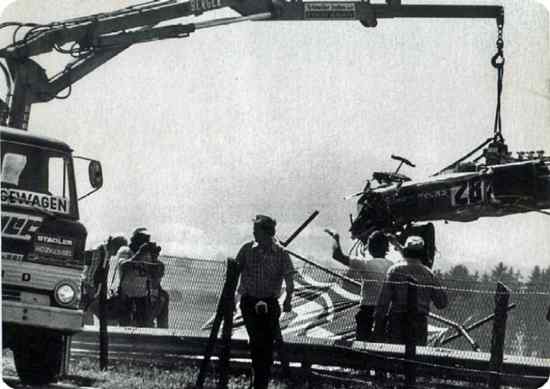
“Captain Nice” Mark Donohue is perhaps best known for his 1973 Can-Am Championship, where he won all but one race during the course of the season and earned the nickname “The Can-Am Killer”. Previously, Donohue had won the Indianapolis 500 (1972), won at Riverside in NASCAR and competed for Penske Racing in Formula One. Donohue was also the very first champion of the now-defunct IROC series, which pitted the greatest drivers in the world against each other on equal terms to see who would win.
Donohue died of a hemorrhage following a crash in Austria, where, during testing, a tire failure sent him careening into the catch fence, where his head struck a post.
Donohue was known for being successful at setting his cars up himself and pushing them to the absolute limit, and shortly before his death he set the closed-course land-speed record at Talladega Superspeedway in Alabama.
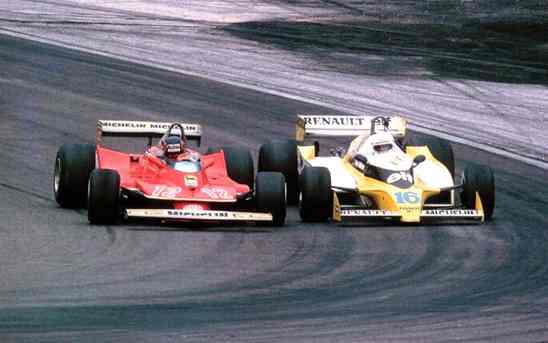
Gilles Villenueve was the pride of Canadian motorsports. His career started in Quebec, where he began snowmobile racing before moving on to Formula Atlantic. He won the 1976 Championships in both the United States and the Canadian Formula Atlantic, and was subsequently offered a ride at McLaren in 1977. He drove in 1978 for Ferrari, and during his short career he won six races and finished second in the series championship.
In 1982, Villenueve was qualifying for the Belgian Grand Prix at Zolder when he struck a slower car, launching his into the air at speed estimated between 120 and 140 miles per hour. The car slammed into the track and somersaulted, launching Villenueve into the catch fence.
Ile Notre-Dame Montreal, a racing circuit in Canada, changed its name to Circuit Gilles Villenueve after the accident, and, even today, Giles remains one of the most popular and endearing auto racers in history.
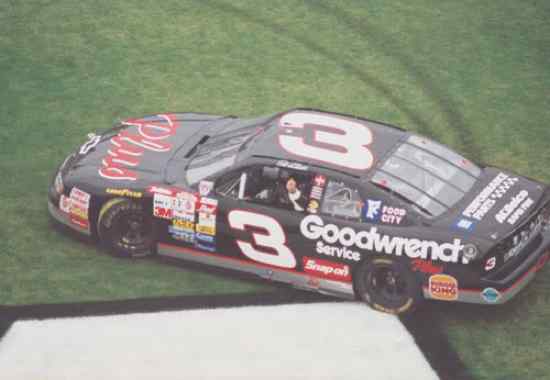
“The Intimidator” was one of the most polarizing figures in NASCAR history. Fans who loved him loved that he would do anything to win a race, and his detractors booed him for the same reason. Earnhardt was undoubtedly one of the most successful NASCAR drivers ever, winning 76 races and seven championships during its most competitive and difficult era. In 2000, at the age of 49, Dale Earnhardt answered those saying he should retire with a second place points run, making him a serious favorite for the 2001 Winston Cup title. The team he owned, Dale Earnhardt Inc., also expanded to three cars, with Steve Park and Dale Earnhardt, Jr. being joined by long-time driver and friend Michael Waltrip.
Waltrip and Earnhardt Junior were leading the Daytona 500 on the final lap, with Earnhardt Sr. in third. As the cars rounded the third corner, Earnhardt’s car was tapped in the rear fender and slid down, before abruptly turning back up the track and slamming into the wall at 160 miles per hour. Fellow driver Kenny Schrader, who had struck Earnhardt’s car as he had hit the wall, went to the window to check on him and immediately began signaling for help. Earnhardt was pronounced dead later that day, and had been killed upon impact with the wall.
Many fans point to Earnhardt’s death as the death of a greater part of NASCAR, as the sport has changed in the years since he died. No one has driven his legendary #3 since his death, and the sport has made numerous changes in the name of driver safety. Earnhardt memorabilia still sells incredibly well at many tracks, a testament to the legacy of NASCAR’s brightest star.
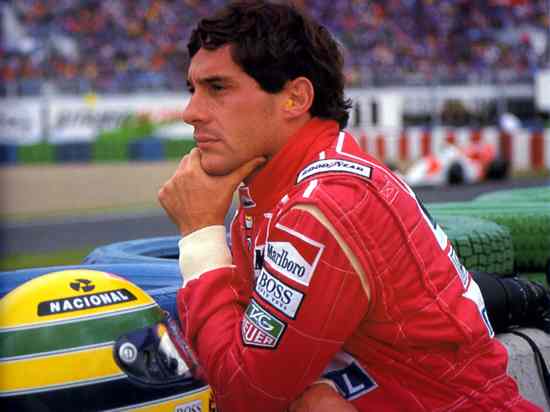
A 2009 poll of 271 Formula One drivers, crew members and employees designated Ayrton Senna as the greatest F1 driver in its history. A three-time champion, Senna won the Monaco Grand Prix six times and held the pole position record from 1989 until 2006. Senna was well-known as a hard-nosed competitor, and was particularly known for his feud with Alain Prost, with whom he dueled for championships in the 1988-1992 seasons.
Senna’s 1994 season got off to a rough start; despite winning pole in the first two races, he failed to finish either race and was twenty points behind in the driver’s standings. He was leading the San Marino Grand Prix at Imola, where many drivers were on edge after the death of rookie Roland Ratzenberger, when his car left the track and slammed into the retaining wall at 135 miles per hour. The wheel housing was pushed backwards and slammed into his helmet, causing fatal skull fractures. In his car, safety workers found a furled Austrian flag, which Senna was going to raise in honor of Ratzenberger.
The Brazilian government declared three days of national mourning for the country’s greatest star. Alain Prost, his greatest rival, was one of the pallbearers for the funeral, and an estimated three million Brazilians lined the streets to pay their respects. In Japan, Honda’s Tokyo headquarters received so many floral tributes that it overwhelmed the lobby, despite the fact that Senna no longer raced for the Honda-backed McLaren teams.
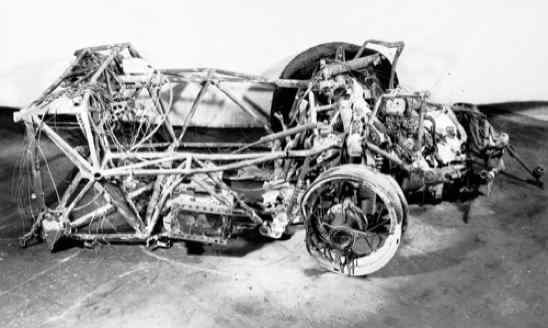
Pierre Levegh, a factory driver for Mercedes-Benz, was following the race leader after two hours of racing during the 1955 24 Hours of Le Mans race. A slower car blocked the way and, although the lead car was able to avoid it, it left Levegh with no time to react. He collided with the slower car, which featured a ramp-like rear, and was sent airborne at almost 150 miles per hour. It soared through the air and hit a mound of dirt to the left of spectators. The car somersaulted and parts – including the front axle and hood – flew into the crowd. The fuel tank ruptured and the car, which had many components made of magnesium, erupted into flames, sending embers into the track and the crowd. At the end of the day, 83 fans were killed and 120 more were injured.
The 1955 Le Mans Tragedy has been described as the single event that nearly killed motorsports. Mercedes-Benz pulled out of competitive motorsports until the mid-1980’s. The governments of Germany, France, Switzerland, Spain and other nations banned auto racing outright, until tracks could be brought up to a higher safety code (Switzerland still has a ban on all forms of timed motorsport, as of 2010).
Safety measures that are commonplace today, such as seat belts, were put in place after the 1955 Tragedy, and the track was changed to account for the increase in speeds from 60 miles per hour when it first opened to over 190 miles per hour, in 1955.
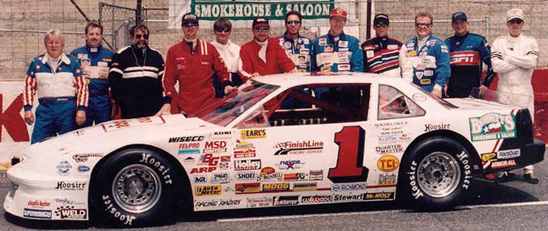
In the world of NASCAR, no one family has had more success than the Pettys. Lee, Richard and Kyle Petty won a combined 262 races and ten championships in their collective NASCAR careers. It comes as no surprise that when Kyle’s son Adam announced he would join the NASCAR ranks, the entire sport took notice. Adam’s NASCAR Winston Cup [now Sprint Cup] series debut in Texas during the 2000 season made him the first fourth-generation athlete in American sports.
Adam was practicing at the New Hampshire Motor Speedway in preparation for an event when his throttle jammed. His car hit the wall head on at speeds estimated at nearly 115 miles per hour. He died instantly.
Adam Petty’s death brought a shocking end to the Petty legacy. Though Kyle raced for eight more years (using Adam’s number 45), the Petty name has not been in the Winner’s Circle since.




